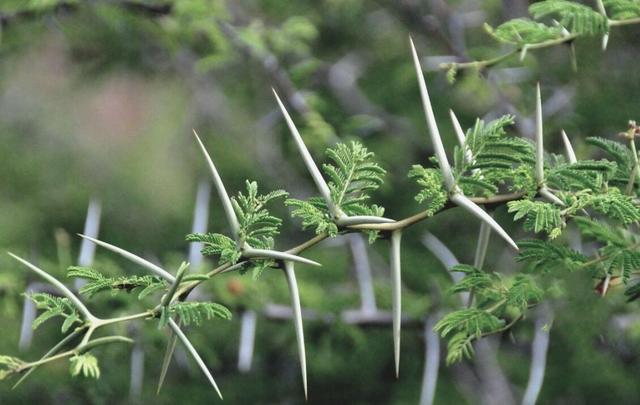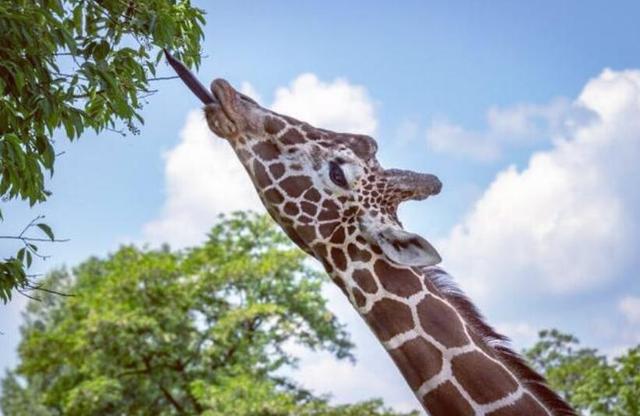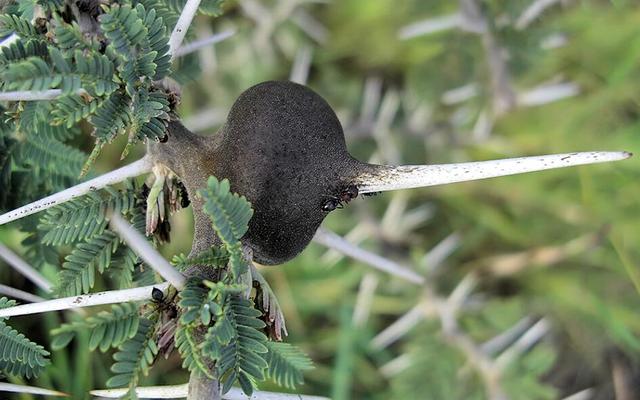Within the beauty of nature lies a cold law: If a species is not able to adapt to the complexities of its natural environment in time, it will be ruthlessly eliminated.
This law is an extrinsic factor in the evolution of many species on earth. Plants, for example, have evolved various defence mechanisms to avoid being eaten by animals, and the animals that feed on plants have to co-evolve with them in order to survive and reproduce, thus breaking their defences.

In fact, the acacia tree and the giraffe are a case in point. On the one hand, the acacia tree has been trying to deal with the giraffe, and on the other hand, the giraffe has been fighting for millions of years.
The acacia tree, a common plant in the african savannah, has used only one trick in its long evolutionary journey to "Grow taller" Than most phytophagous animals, but this trick has not worked against giraffes, which have evolved tall enough to become the tallest on the planet. They have evolved to become the tallest animal on the planet.

Acacia trees have also evolved a 'spiny' defence strategy, with their branches being covered in sharp, hard spines, which can typically reach over 10cm in length, but this is still ineffective against giraffes, which have evolved long, flexible tongues.
Giraffes' tongues can reach lengths of over 40cm and usually they can simply use their flexible tongues to avoid the hard spines of the acacia tree and then flick and roll to eat the leaves.

In addition to its physical defences, the acacia tree has also evolved a chemical-based trick by secreting a chemical in its leaves called "Tannic acid", which is toxic to animals and can make them dizzy at best and kill them at worst.
One reason is that giraffes have evolved a degree of resistance to tannins over time as a result of eating acacia trees.
The other reason is that acacia trees are unable to keep the tannin concentration in their leaves high at all times, and it is only when they are being eaten that the tannin concentration in their leaves increases significantly. This is a time lag, which the wise giraffe detects and they use it to nibble back and forth between acacia trees to avoid eating leaves with too high a concentration of tannins.

For example, if there are three acacia trees, "A", "B" And "C", when the giraffe eats the leaves of "A" When the giraffes eat the leaves of "A", if they feel that the taste is not right (the concentration of "Tannic acid" Has increased), they will stop eating and move on to "B". When the leaves of "B" No longer taste right, they will go back to "C", and when the leaves of "C" Also taste wrong, the concentration of "Tannic acid" In the leaves of "A" Has dropped. The concentration of "Tannic acid" In the leaves of "A" Has dropped and they can then return to eat the leaves of "A" Again.
To counter the giraffe's 'back and forth', the acacia tree has evolved a trick: When a tree is being eaten, it releases an ethylene pheromone in addition to a significant increase in the concentration of 'tannic acid' in its own leaves, which is felt by nearby acacias. The nearby acacia trees, sensing this pheromone, will also increase the concentration of tannins in their own leaves, thus creating a 'watchful eye' effect between trees.

However, giraffes have learned to nibble on the next acacia tree in the upwind direction, as the pheromones released need to be transmitted through the air, which means that an upwind tree will not be able to receive the notification of its 'companion' in time.
It is also worth noting that one species of 'whistling acacia' has evolved a hollow spherical structure at the lower end of its hard spines, which also secretes nectar and thus attracts a large number of ants.
When the tree is eaten by animals, the ants see it as a threat and attack it violently, some even emitting a strong corrosive form of anthranilic acid, causing the 'nibblers' to suffer.

However, for giraffes, this trick is not very useful because there is a time lag between when the ants are "Startled" And when they attack. They generally leave before the ants attack.
The above is a bit of anthropomorphism to make it more vivid, and from a human point of view, the "Acacia tree's tricks, the giraffe's tricks" Look very interesting. It is the result of their co-evolution over millions of years.


